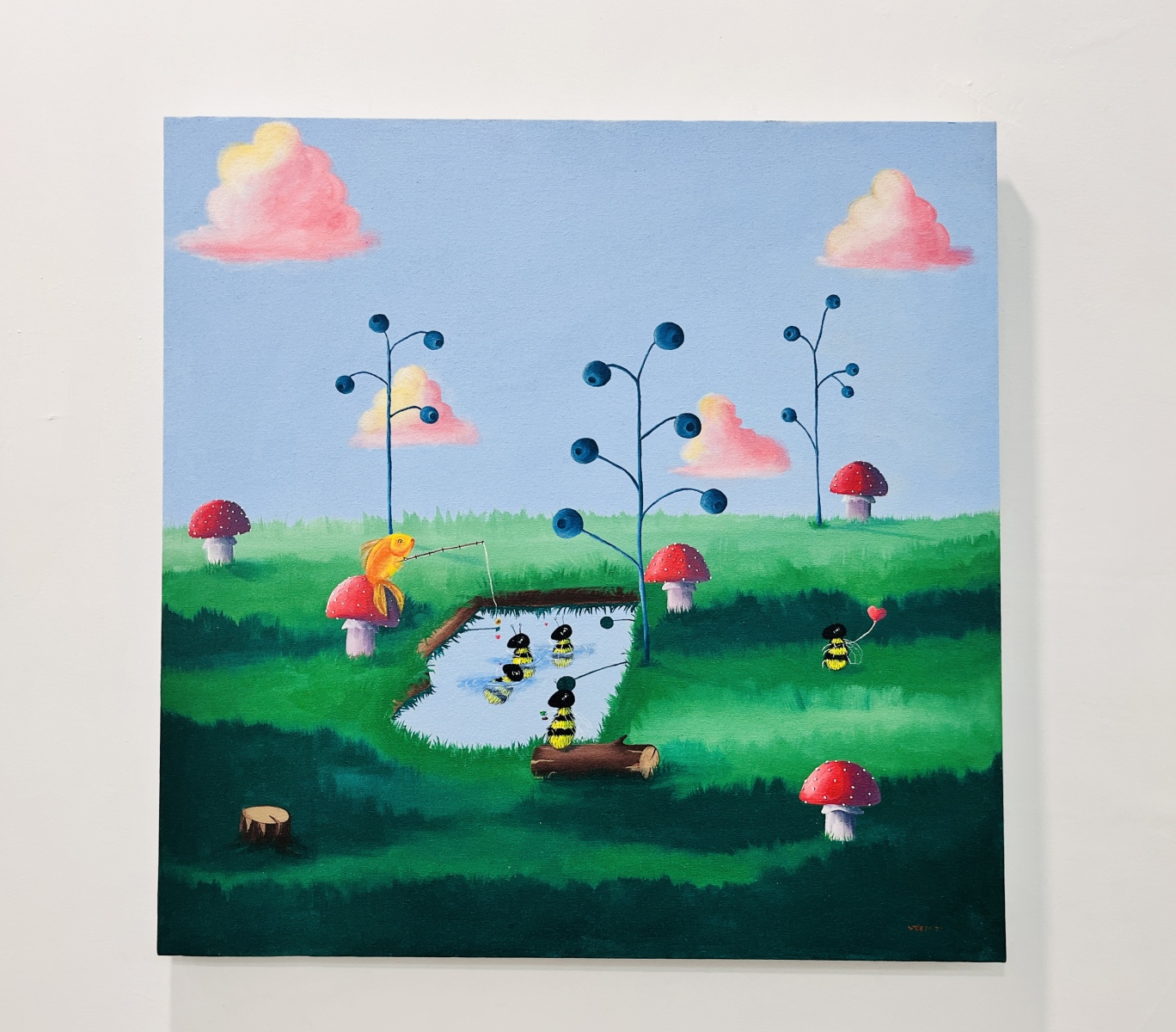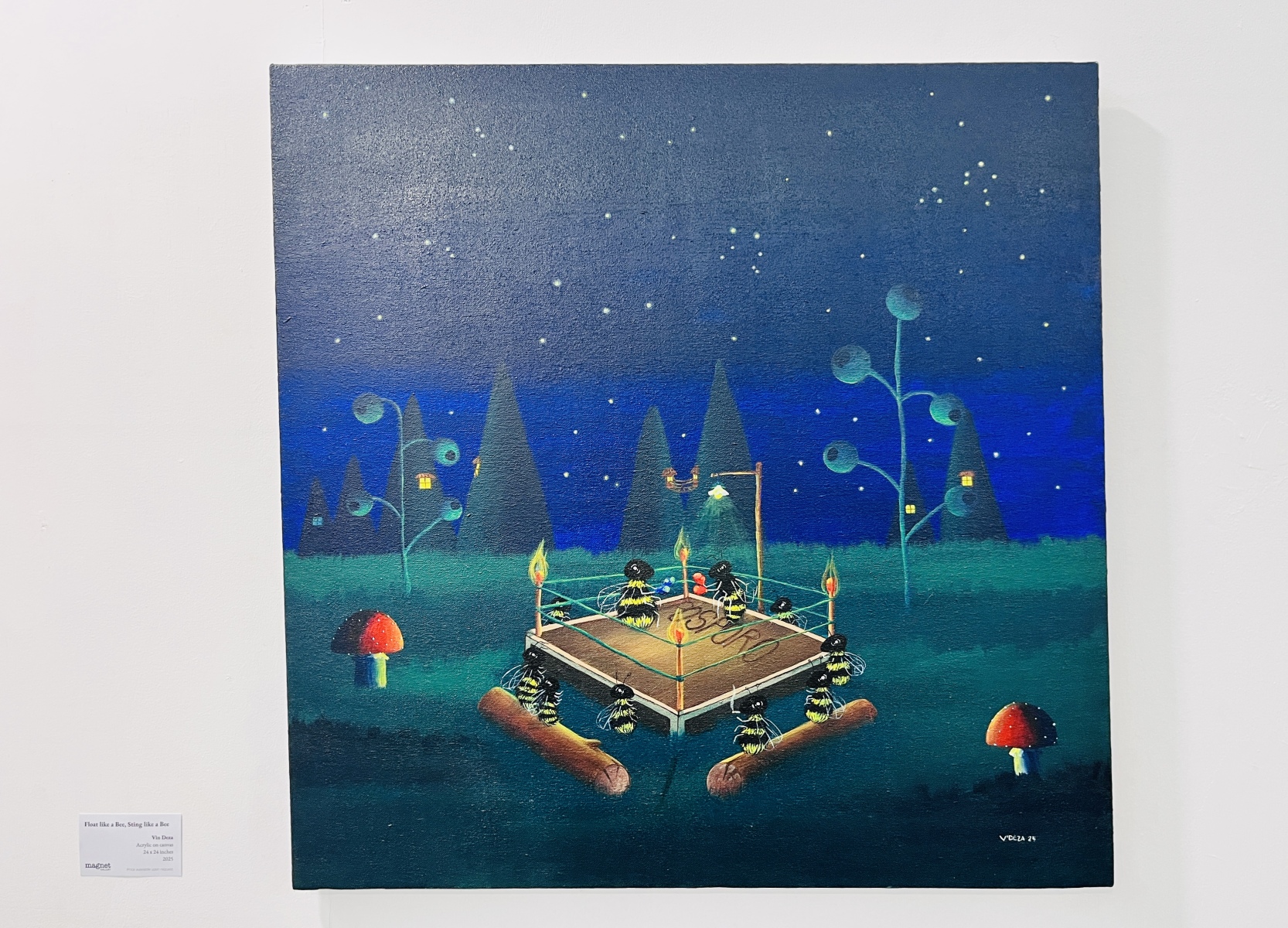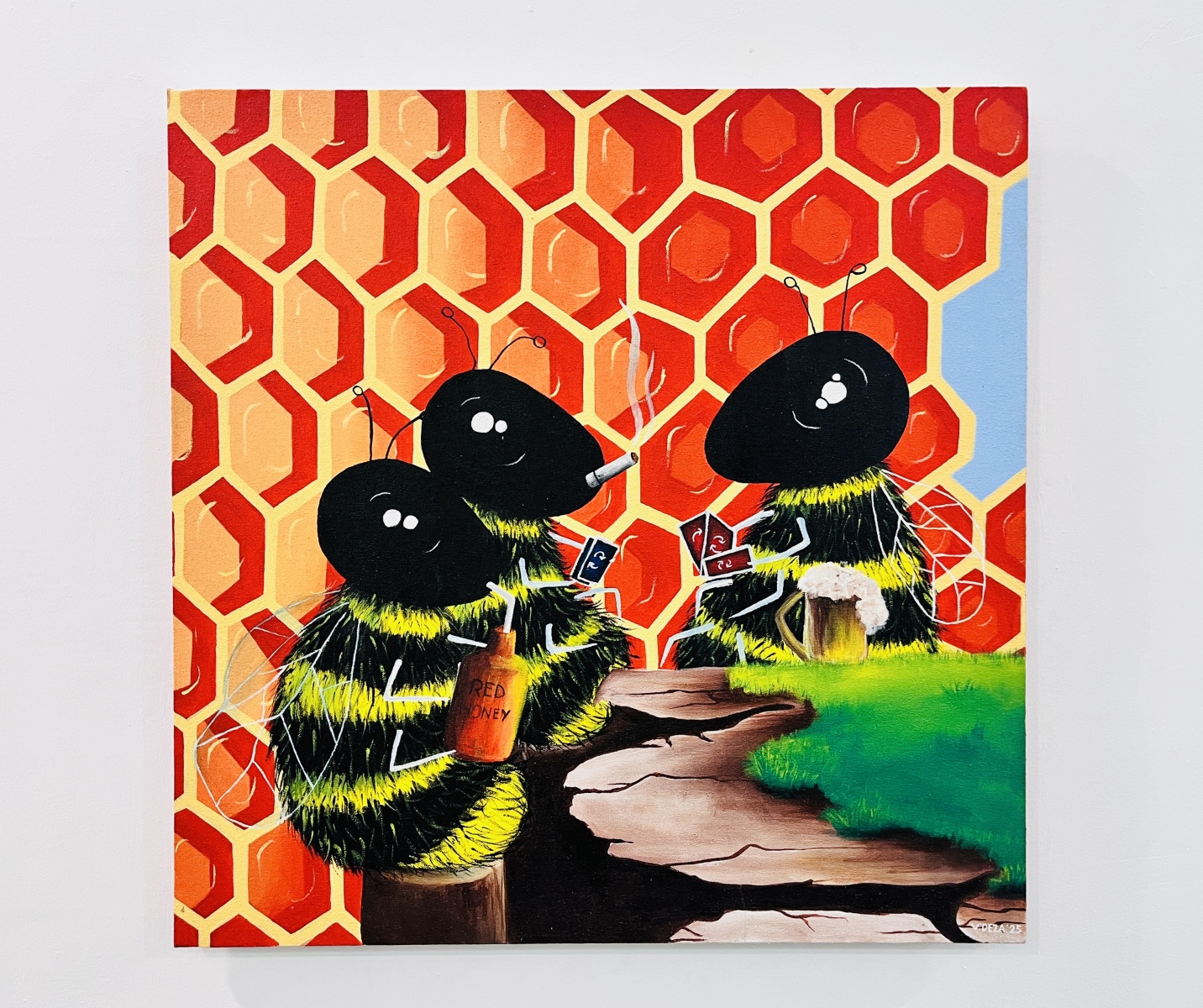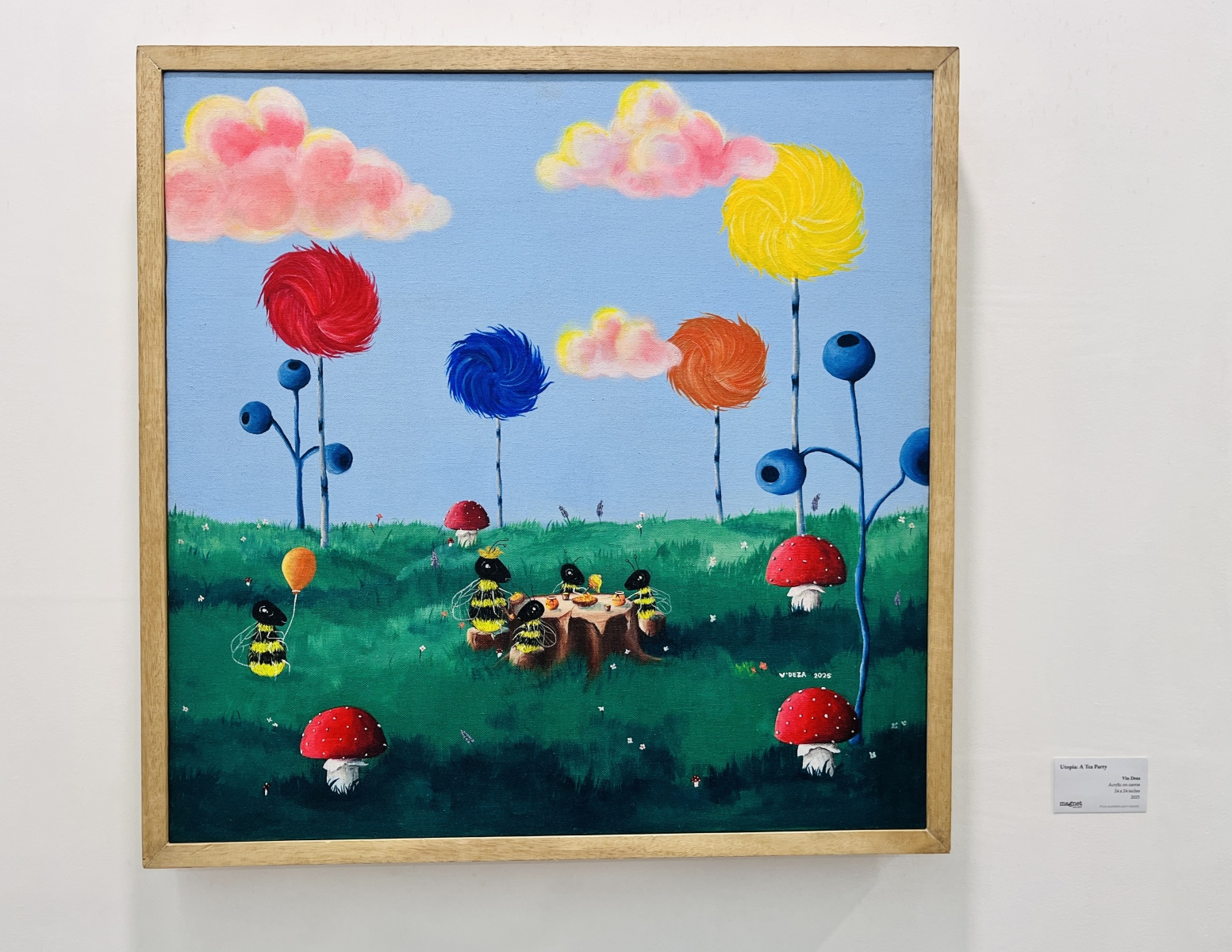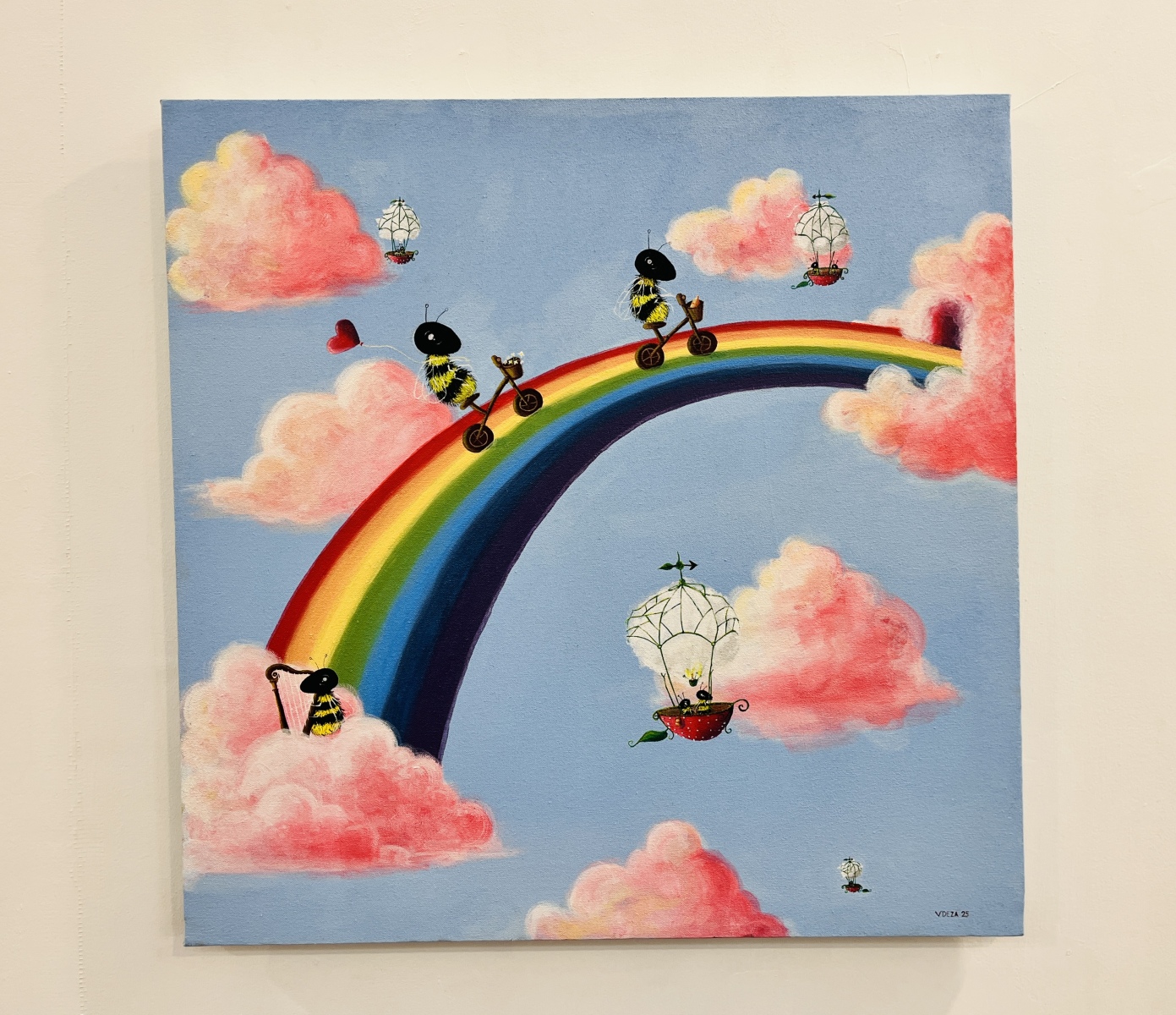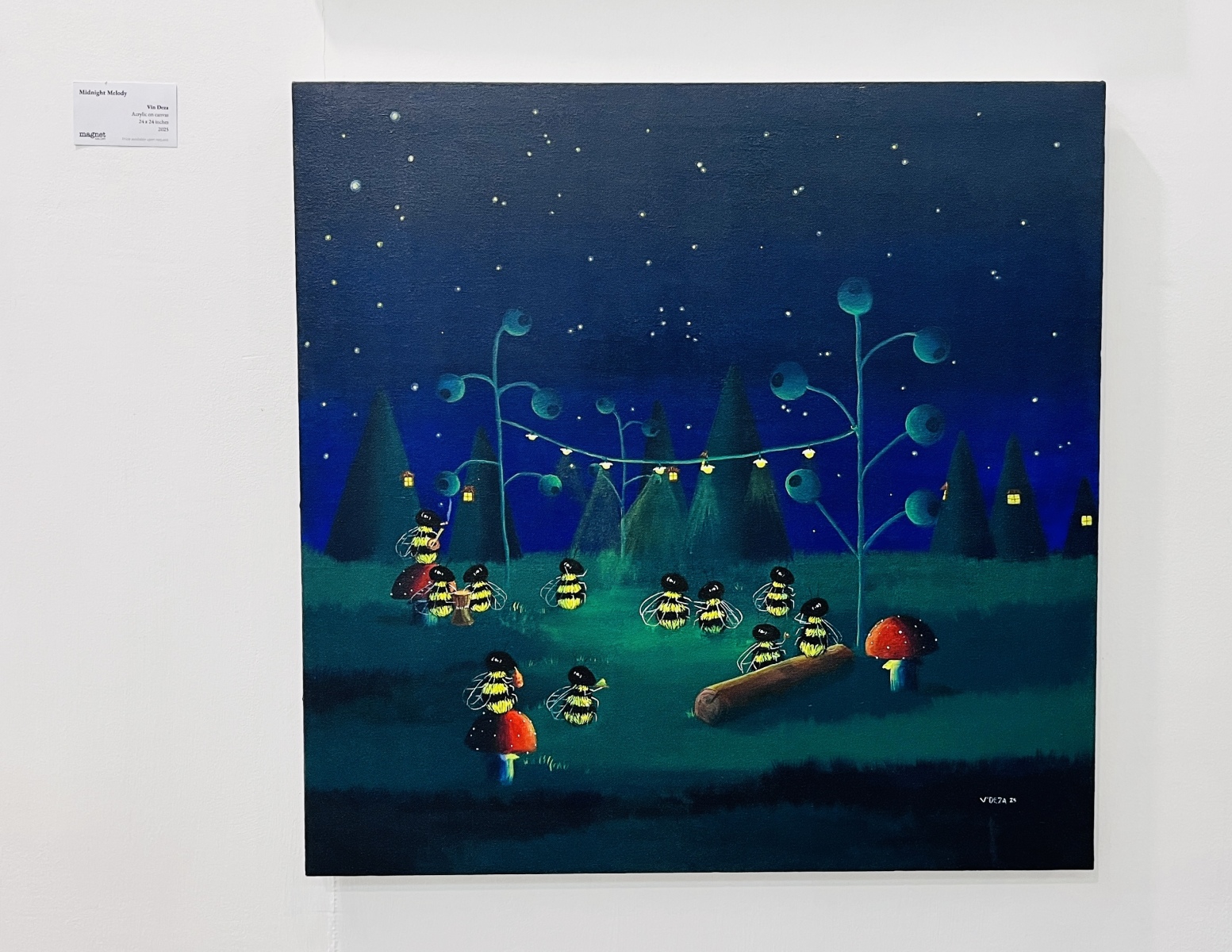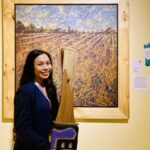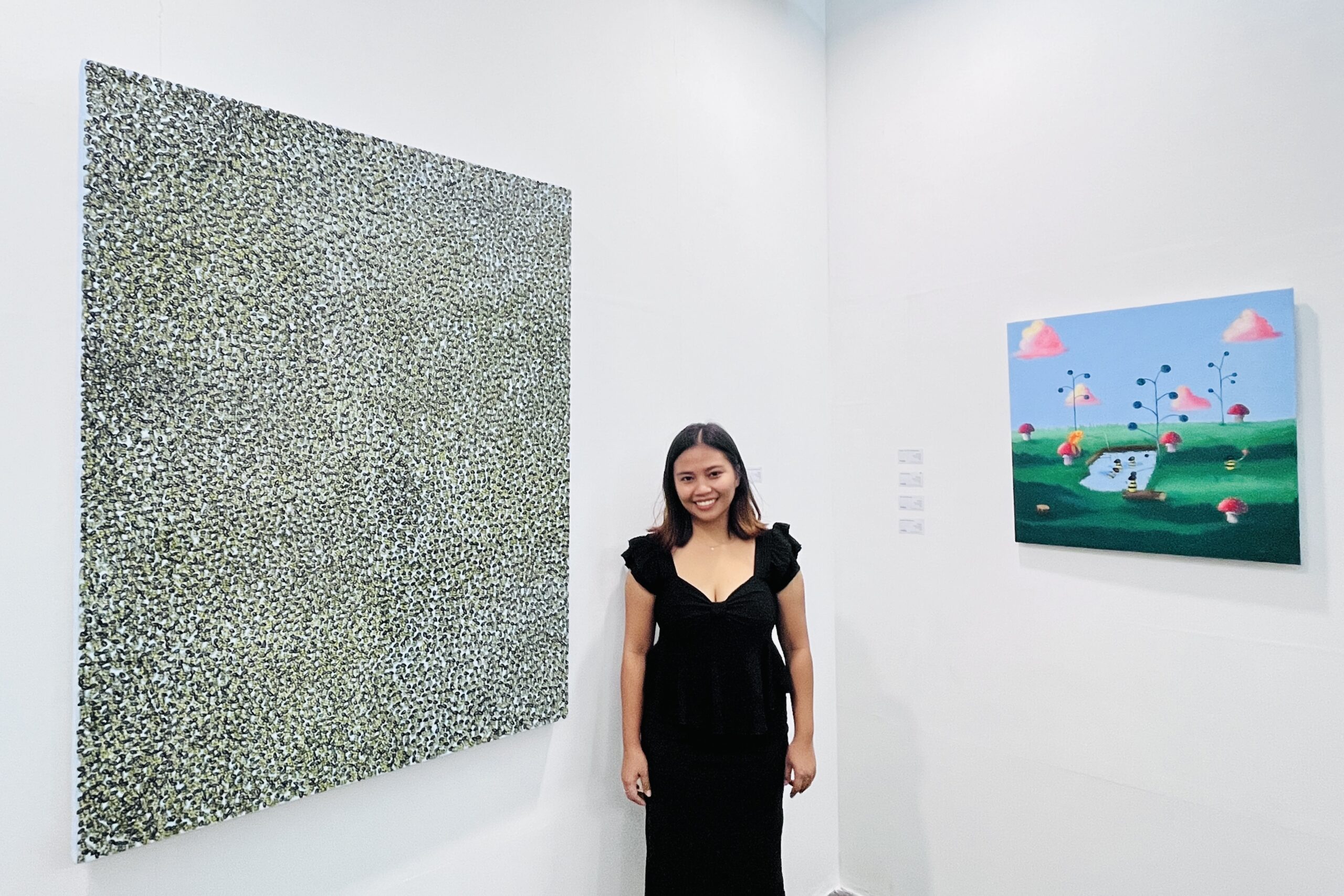
Our Refracted Lives in Vin Deza’s ‘the Other Hive’
In her whimsical Tales from the Other Hive, emerging artist Vin Deza invites us into a world where bees don’t merely labor to give us honey — they live like us. They sip beer like five-thirsty workers at sunset, toss cards in the backyard over a root ball, bike above rainbows, fish in ponds, enjoy boxing matches among themselves, and picnic at the homestead.
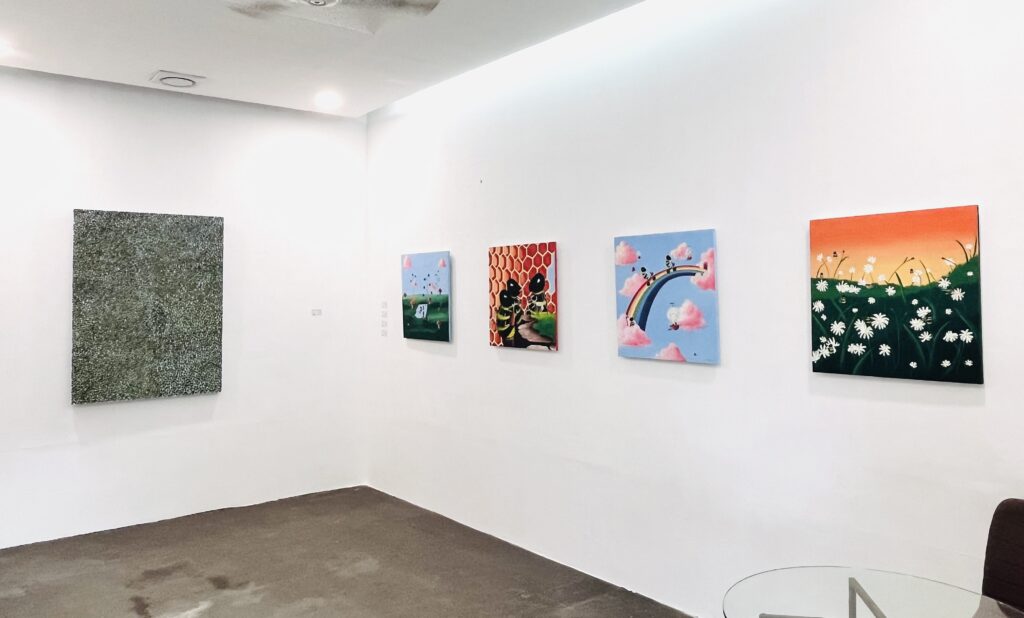
The scene on Vin Deza’s canvas mirrored reality outside the Magnet Gallery, where a crowd of guests buzzed with conversation for her first solo exhibit — picnicking over cocktails of local delicacies, sipping milk tea, shakes, and soda, while exchanging thoughts on the domestic affairs and creative milieu of the town along the peaceful residential Salas Street in Dumangas, Iloilo.
Through the prism of another species, Vin Deza captured human life as we, humans, became bees — and bees became us — echoing Tales from the Other Hive as both gentle anthropomorphism and surreal chiasmus: a playful parody of human life, refracted through the world of another kind.
The collection evokes parallelism through shared themes of productivity and hard work. “If you observe closely,” said Vin Deza, “bees are foraging when they leave the hive—gathering nectar and pollen from flowers—much like us venturing out to explore, savor nature, and draw from its abundance.”
Their return to the hive, bearing what they’ve gathered and offering it to the collective, reflects our own roles within a community, she explained.
The collection also depicts bees as peaceful beings, as social beings, fulfilling their role within the web of biodiversity. Yet when their hive is disturbed, they erupt into a frenzied scatter, usually a chaotic cloud of motion, buzzing with urgency as they defend their colony or search for safety. “In these moments, I find myself wanting to gather them back, to restore the calm and peace of their world,” expressed Deza.
Each of Deza’s paintings unfolds like a fable, with bees as reflections of ourselves. Her works hum with quiet narratives of Dumangas and neighboring towns, its affinity with the sea, its rich historical legacy, the warmth of friendship, the monotony of routine, the impulses of productive lives, the joy of slow living and rural abundance, and of simply being alive with all its creative energy.
 See photos of the opening of exhibition: Tales from the Other Hive
See photos of the opening of exhibition: Tales from the Other Hive
In what she calls “the other hive,” Deza imagines a world far removed from the mechanized image of the bee. Here, life flows with the seasons—La Niña, El Niño—fluid, adaptive, and resilient. It is not governed by hierarchy or efficiency, but shaped by harmony, change, and quiet intelligence.
Beneath this playful vision lies a deeper inquiry, one that echoes the pioneering work of entomologist Charles Henry Turner. At the turn of the 20th century, working without institutional backing, Turner challenged prevailing scientific norms. He crafted delicate tools and painted discs by hand to demonstrate that bees could recognize patterns, perceive color, and form memory pictures of their world—long before such ideas were widely accepted. His work revealed insects not as instinct-driven automata, but as sentient, learning beings. (Source readings from The Marginalian)
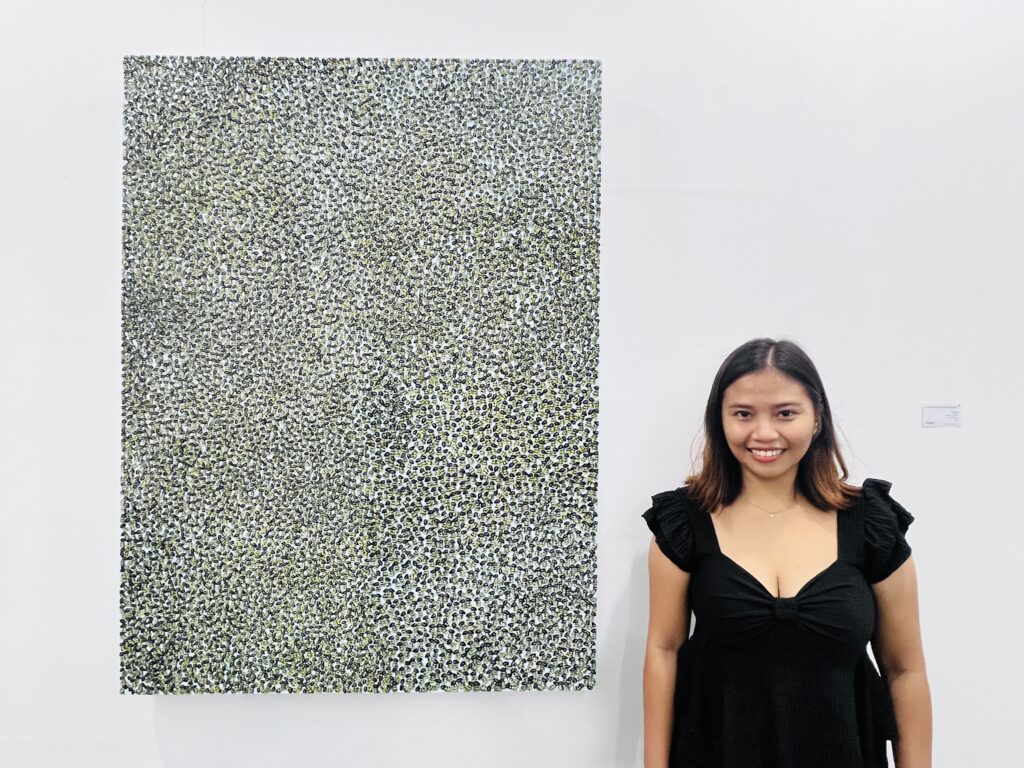
Deza’s bees are not scientists, but thinkers—emotional, social, and expressive. Her canvases reflect Turner’s belief that even the smallest creatures possess perception and inner life. By anthropomorphizing bees, she invites us to reconsider the limits of consciousness, community, and imagination.
What if the bee’s world is not so different from our own? What if it, too, is filled with feeling? These bees do not merely serve a function—they live. And in their living, they mirror us: our rituals, our desires, our capacity for story and art. On canvas, Deza extends Turner’s legacy—not through experiment, but through empathy.

